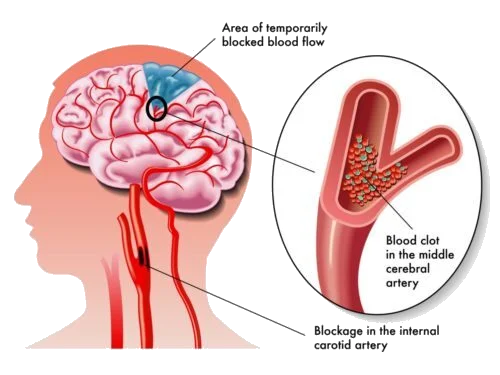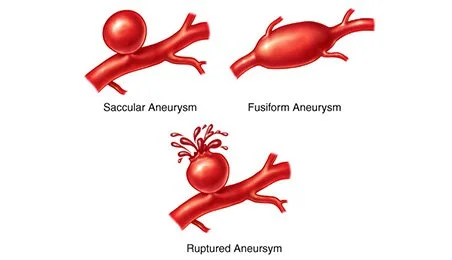Book Your Appointment
Aneurysm
Get At Swasthyam Superspeciality Hospital
Aneurysm
A brain aneurysm can leak or rupture, causing bleeding into the brain (hemorrhagic stroke). Most often a ruptured brain aneurysm occurs in the space between the brain and the thin tissues covering the brain. This type of hemorrhagic stroke is called a subarachnoid hemorrhage.
A ruptured aneurysm quickly becomes life-threatening and requires prompt medical treatment.
Most brain aneurysms, however, don’t rupture, create health problems or cause symptoms. Such aneurysms are often detected during tests for other conditions.

Symptoms?
Common signs and symptoms of a ruptured aneurysm include:
- Sudden, extremely severe headache
- Nausea and vomiting
- Stiff neck
- Blurred or double vision
- Sensitivity to light
- Seizure
- A drooping eyelid
- Loss of consciousness
- Confusion
Causes

Causes

Risk factors
Some of these risk factors develop over time; others are present at birth.
Risk factors that develop over time
- Older age
- Cigarette smoking
- High blood pressure (hypertension)
- Drug abuse, particularly the use of cocaine
- Heavy alcohol consumption
Some types of aneurysms may occur after a head injury (dissecting aneurysm) or from certain blood infections (mycotic aneurysm).
Risk factors present at birth
- Inherited connective tissue disorders, such as Ehlers-Danlos syndrome, that weaken blood vessels
- Polycystic kidney disease, an inherited disorder that results in fluid-filled sacs in the kidneys and usually increases blood pressure
- Abnormally narrow aorta (coarctation of the aorta), the large blood vessel that delivers oxygen-rich blood from the heart to the body
- Family history of a brain aneurysm, particularly a first-degree relative, such as a parent, brother, sister, or child

Complications
If the pressure becomes too elevated, the blood and oxygen supply to the brain may be disrupted to the point that loss of consciousness or even death may occur.
Complications

If the pressure becomes too elevated, the blood and oxygen supply to the brain may be disrupted to the point that loss of consciousness or even death may occur.
Treatment
- Surgical clipping is a procedure to close off an aneurysm. The neurosurgeon removes a section of your skull to access the aneurysm and locates the blood vessel that feeds the aneurysm. Then he or she places a tiny metal clip on the neck of the aneurysm to stop blood flow to it.
- Endovascular coiling is a less invasive procedure than surgical clipping. The surgeon inserts a hollow plastic tube (catheter) into an artery, usually in your groin, and threads it through your body to the aneurysm.
He or she then uses a guide wire to push a soft platinum wire through the catheter and into the aneurysm. The wire coils up inside the aneurysm, disrupts the blood flow and essentially seals off the aneurysm from the artery.

What is a Vascular Surgery?
Vascular surgery is a dynamic and rapidly expanding specialty that deals with comprehensive diagnostic and therapeutic services for patients with diseases and disorders of the arteries, veins, and lymphatics (circulatory system)
Vascular surgeons manage diseases of the veins and arteries in every part of the body except the brain and the heart.
Vascular surgeons are trained in different kinds of procedures
They can perform open, complicated surgery as well as modern minimally invasive endovascular procedures. So they are often known as vascular & endovascular surgeons or vascular specialists. This helps most vascular specialists to give a balanced opinion, unlike other specialists who usually perform only one type of procedure. Therefore, patients can be assured that they will get the best treatment for their particular needs.
Message Us
Get In touch with us. Ask Any Question or Book Your Appointment Now
Emergency
+91-8600888444
Book An Appointment
0712-2222111
Location
Contact for
Book An Appointment:- 0712-2222111
